Seismo-volcanic crisis continues at newly-formed underwater volcano near Mayotte
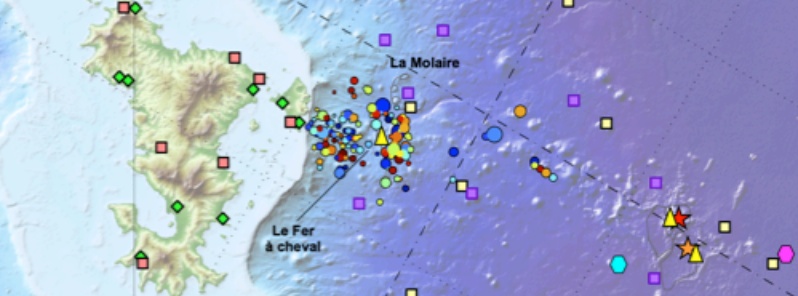
Nearly 900 earthquakes were detected at the new submarine volcano near Mayotte between February 16 and 29, 2020, according to the latest REVOSIMA report. French geological survey BRGM noted that there were 138 localized tremors with an average of 10 per day during the two-week period.
592 volcano-tectonic (VT) earthquakes were recorded between February 16 and 29, 288 long period (LP), and 16 very long period (VLP), bringing the total to 896.
Although the LP signals have been observed since the start of the crisis, they have not yet been classified. This new category has been implemented after the improvement of the representation of seismic signals. The majority of such tremors occurred in swarms lasting few tens of minutes and were usually associated with VLP signals — usually associated in the literature with resonances and fluid movements (magmatic or hydrothermal).
The surface movements measured by Mayotte GPS indicate that there has been a shift of GPS stations to the east of about 20 to 22 cm (7.9 to 8.7 inches) and subsidence of around 9 to 17 cm (3.5 to 6.7 inches), depending on their location on the island. Movement slowdown is observed since April – May 2019; the crisis started in May 2018.
Main seismic activity is still concentrated 5 to 15 km (3.1 to 9.3 miles) from Petite-Terre, at depths of 20 to 45 km (12.4 to 28 miles).
Additional human resources have been dedicated to seismic analysis, which enabled the detection of earthquakes with smaller magnitudes (less than 1.5), explaining the increase in the total number of earthquakes compared to previous months.
Last month, Mahoran authorities started planning emergency and safety measures in the event of a dangerous seismic or volcanic activity.
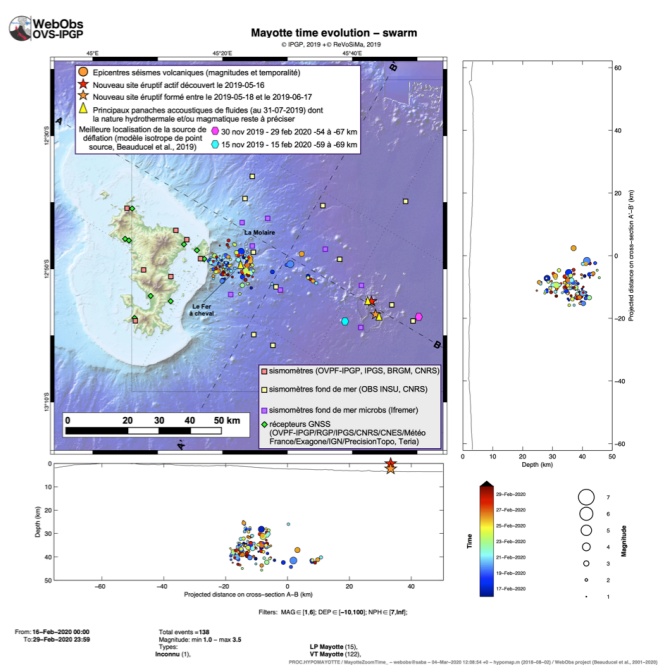
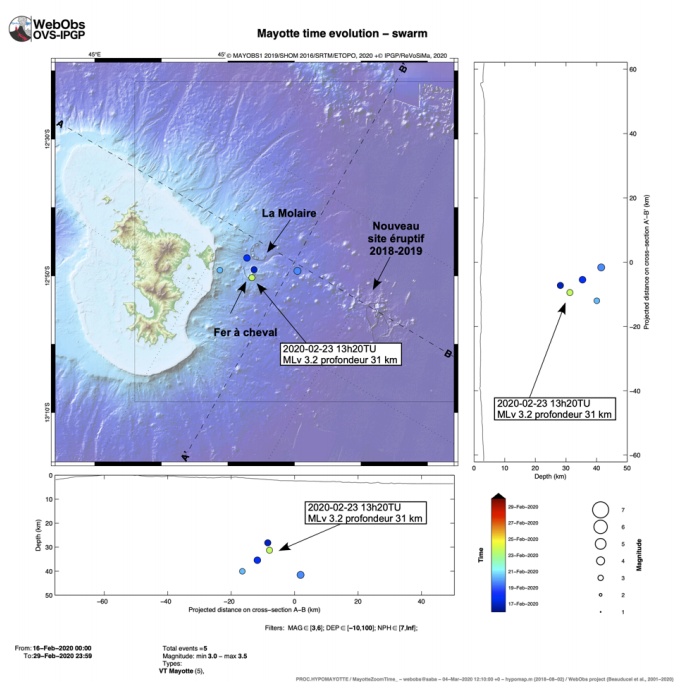
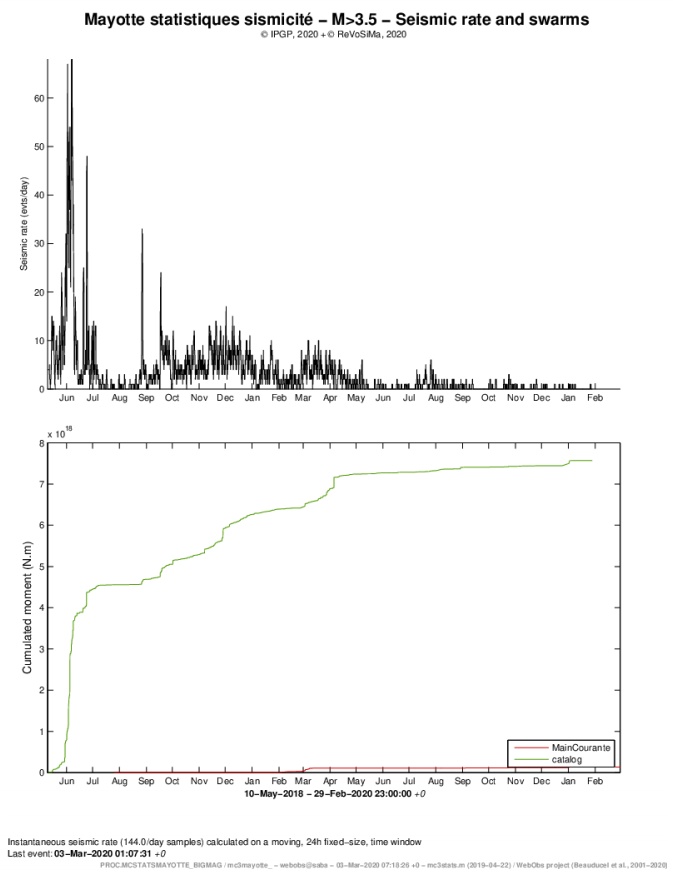
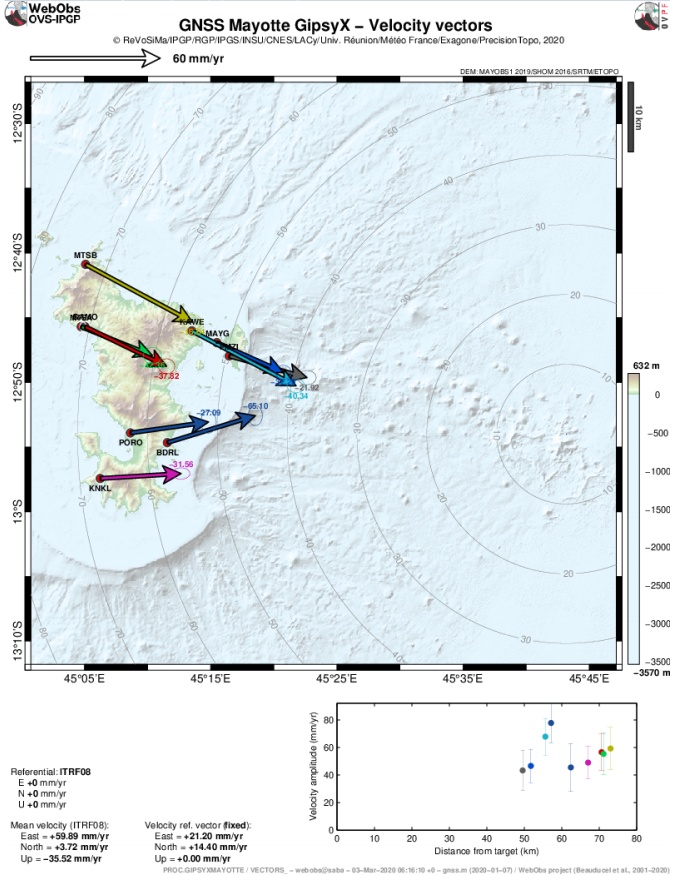
Images courtesy: REVOSIMA, BRGM
Geological background
Mayotte Island in the Mozambique Channel between the northern tip of Madagascar and the eastern coast of Africa consists of two volcanoes with diverse geochemistry that were active from the Pliocene to the Holocene. Lavas on the NE were active from about 4.7 to 1.4 million years and on the south from about 7.7 to 2.7 million years.
Mafic activity resumed on the north from about 2.9 to 1.2 million years and on the south from about 2 to 1.5 million years. Morphologically youthful-looking maars are present on Mayotte Island, and Zinke et al. (2003) found several pumice layers of Holocene age in gravity cores on the barrier reef-lagoon complex at Mayotte. (GVP)
Featured image credit: REVOSIMA

Commenting rules and guidelines
We value the thoughts and opinions of our readers and welcome healthy discussions on our website. In order to maintain a respectful and positive community, we ask that all commenters follow these rules.